When I joined HubSpot in November 2018 to lead the HubSpot Connect Partner Program, Scott Brinker had a pretty big initial “ask” for me - could I redesign the program and partnership levels to match our vision for a bigger, better partner ecosystem?
“HubSpot Connect” launched in 2017 with 65 partners, and would exceed 200 partners by late 2018. It was growing fast, set to grow faster.
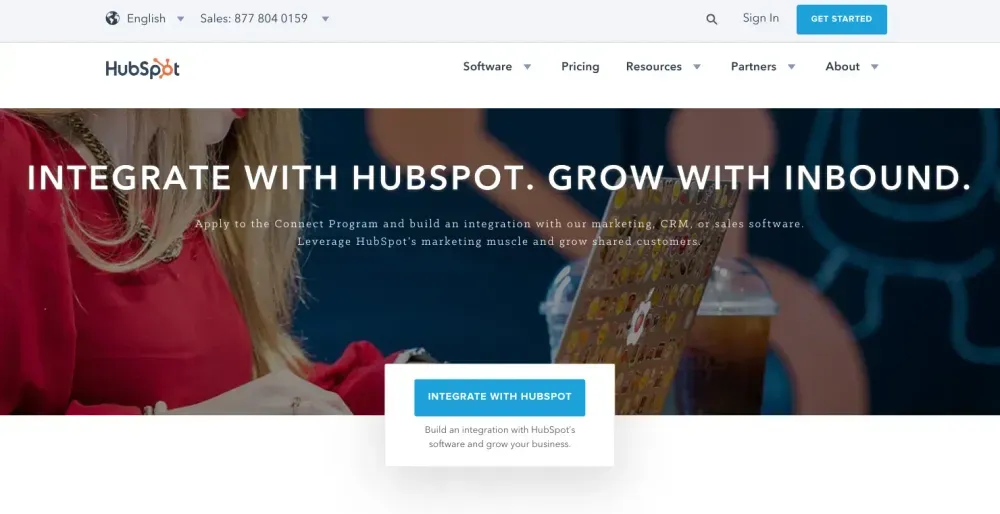
The Connect Partner Directory was well thought out and well designed, with distinct categories, search, featured listings, and pretty comprehensive information about each integration. It worked well, but its hull was starting to creak as we grew.
Yes, almost two years after leaving HubSpot, I’m still making nautical references.
A program of partner tiers
We had, at the time, a fairly typical “tiered” partnership program. Typical, in that we had mirrored a typical “partner tiers” setup, similar to agency, affiliate, and referral programs. This structure is common in business partnerships, specially in circumstances where a partner sells or provides services to support platform customers.
Programs like these tend to have a variety of different partner tiers, with each tier unlocking marketing resources (like co-marketing campaigns), access to partner managers, and - often enough - more money, financial investment and additional resources if you're a top tier partner.
HubSpot Connect
“HubSpot Connect” had three partner tiers, each with different install requirements and benefits:
- Beta Integrators (10 installs) earned a listing in the HubSpot Connect Partners Directory.
- Certified Partners (50 installs) earned additional exposure through HubSpot channels, plus marketing support.
- Premier Partners (500 installs) earned quarterly business reviews, co-marketing opportunities, and event invites.
With three partner tiers, it was simple and it worked well. App Partner programs often struggle to scale beyond 200 partners - this structure of partner tiers had achieved exactly that. Yet, from speaking with customers and partners, there was room for improvement.
Most go-to-market programs focus on driving distribution of existing products, and incentivizing service and solutions providers to increase adoption and retention of those products. Whereas many partner managers in product partnerships teams primarily focus on product innovation outcomes - creating new, unique product value for customers.
Partner tiers make a ton of sense for the go-to-market partners, less so for product partners.
Customers don't always benefit from partner tiers
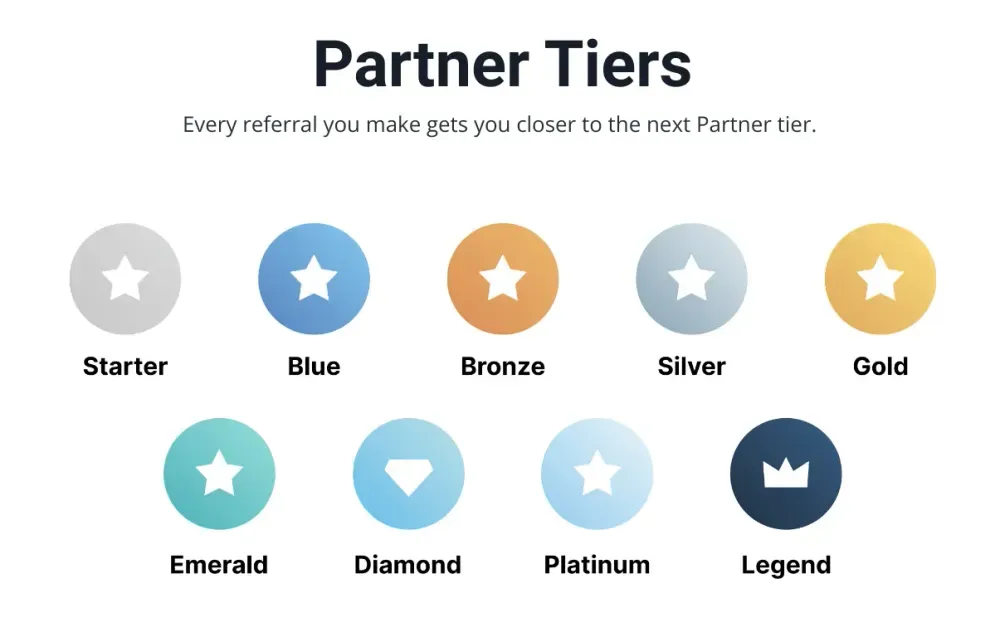
One theme became clear early on - customers didn’t care so much about partner tiers. And, because we didn’t expose the tiering rationale to them, they didn’t really understand the differences between the three tiers. All of us - customers, partners, and HubSpot - weren't on the same page.
Customers were unusually scared about one of the partner tiers. The "Beta" tier created negative connotations for customers. Whether or not an integration was fully formed and complete, or was a “thin” integration between products, if it earned between 10 and 50 installs, we branded it “Beta.”
“If it’s in Beta, it’s broken,” said one customer. “What if I can’t generate 50 installs? Will I get stuck in Beta tier purgatory?” pondered prospective partners. Beta - especially for indie developers without well known, trusted brands - had inadvertently hurt partner install growth and adoption.
Selling vs building
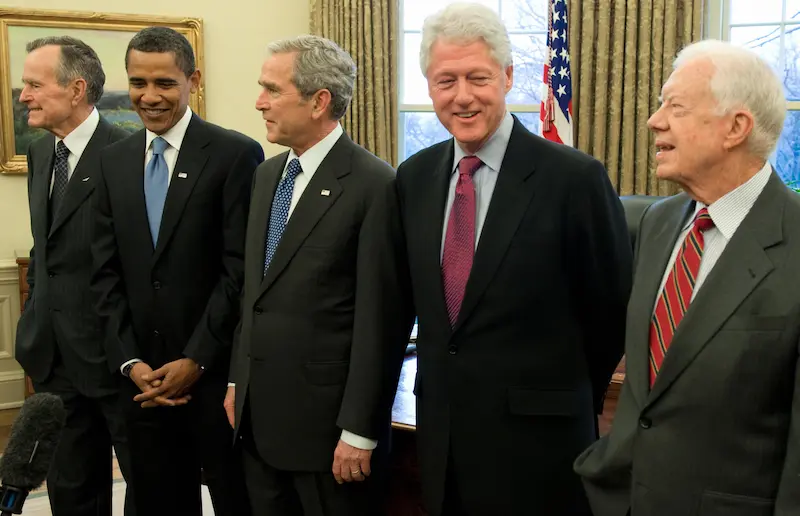
Typically, in revenue-focused partnerships, top tier partners play a crucial role in driving revenue and success. By maintaining strong relationships with these successful partners, partner management teams can leverage their success to motivate other partners and improve overall engagement.
If the partners you're working with primarily exist to sell the products you've already built, it makes sense to form a "presidents club" of sorts to reward those that drive the most revenue. But rewarding product innovation from partners requires a different approach.
A concern of our Connect partners partners was that tiered structures created a sense of exclusivity and access to fewer resources, particularly for partners that were not in the "top" partner tiers.
Higher tier partners usually enjoy benefits such as exclusive events and early access to new products, which can drive more resources and revenue for their business. However, this exclusivity can also make it difficult for lower tier partners to move up or down different tiers.
"The rich get richer" as one partner put it.
We quickly shipped our first program change: “Beta” became “Listed” and the fears - from customers and partners alike - subsided.
Challenges of Traditional Partner Tiers
Traditional partner tiers have long been a staple of many programs, but they come with their own set of challenges. One of the primary concerns is that - for new partners - tiered structures create a sense of exclusivity, leading to a lack of engagement and motivation among partners at different levels. Imagine being stuck in a "bronze" tier, feeling like you’re miles away from reaching the top tiers of "gold" partners, or the next tier. It can be demotivating, specially if partner tiering isn't adequately suited to every company.
Additionally, traditional tiers often rely on arbitrary metrics, such as revenue targets or sales performance, which may or many not accurately reflect a lower tier partner's true value in the partner ecosystem. These rigid structures can be inflexible, making it difficult for partners to move up or down the tiers as the business partnership and goals evolve.
Encouraging diversity among strategic partners
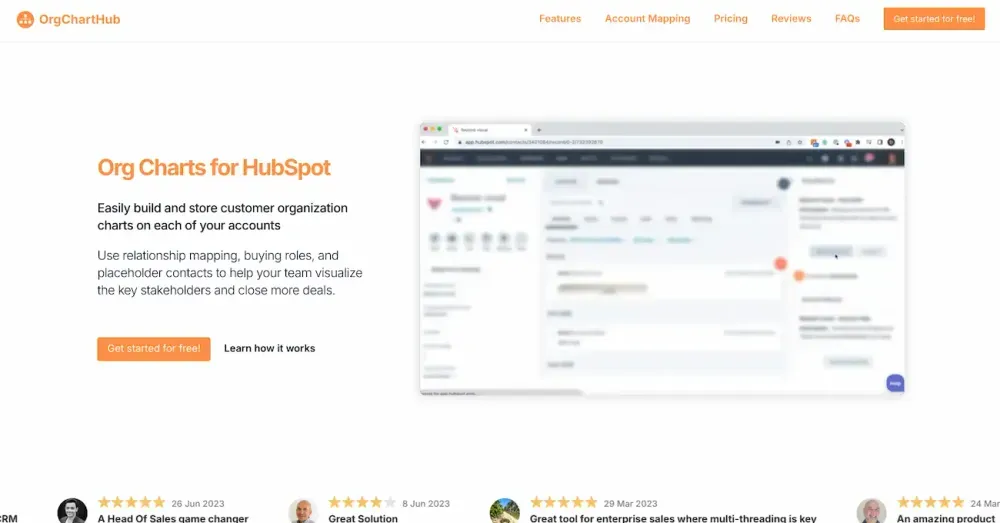
Another major theme emerged through conversations with existing partners, and through conversations with a growing queue of partners eager to join the ecosystem party. Our install requirements didn’t accommodate a growing number of partners, and a growing diversity of partner types.
A cohort of what are now known as “ecosystem entrepreneurs” had emerged, creating unique “Built for HubSpot” apps. Partners, like OrgChartHub, that would not exist if HubSpot did not exist. Most weren't attracting as many installs as integrations with "strategic partners" in our ecosystem.
But, unlike those "strategic partner" integrations, partners like OrgChartHub were unique and helped us convert customers in niches we may not have previously been competitive in. These "ecosystem entrepreneur" partners were creating unique product value that created an impenetrable platform moat for HubSpot.
Products and features are relatively easy to clone and copy. But cloning and copying an ecosystem of products built solely atop a platform is impossible. Platform partnerships like these are a big reason why Microsoft, Atlassian, and Shopify are where they are today.
Shopify even recently launched their own “Built for Shopify” program to recognize and reward partners just like these. Creating new, unique customer value is always a positive for platform businesses.
Less (installs) is more
But getting to 10 installs when you’re an indie developer is a tough trust-building feat. And, in reality, even our top priority partners (by install volume) were testing early versions of their integrations with an average of 3 customers. Many of these “Market Maker” integrations were low quality “thin” integrations.
This seemed unfair - our partner tiers held indie partners to a higher standard than a company with tens of millions of dollars in venture funding, and almost unlimited resources.
So we shipped our second change to our partner tiers.
Getting “Listed” now required 3 or more “active” installs - a partner requirement that still stands today. Combined with a thorough marketplace on-boarding process, the number of “Built for HubSpot” partners grew quickly.
OrgChartHub was joined by “ecosystem entrepreneur” partners like datawarehouse.io and hapily, each building a variety of products uniquely suited to the growing needs of increasingly diverse sets of customers - in more than 135 countries around the world.
At the same time, for the same reason, we removed the 50 install requirement for partners to earn a “Certified” badge.
“Certified” apps pass through a rigorous review process, requiring a ton of upfront work from partners. That badge, once explained to customers through listing tooltips, was a powerful trust-building device.
Yet, to earn 50 installs, partners first needed to earn customer trust. It was a chicken-and-egg situation.
So, as long as apps were listed, they were now free to apply to become Certified. Identifying successful partners and analyzing their achievements is essential for developing effective partnership strategies and optimizing resource allocation. A lower install benchmark was a way to accelerate the identification process.
Premier (Inn)
As we evolved “Beta” to “Listed” and revised our active install requirements, another theme became abundantly clear. Our “Premier” tier - the HubSpot Connect equivalent of "gold partners" - was more “Premier Inn” than “Premier Product.”
Personally, I’m fond of Premier Inn Hotels. They’re usually clean, cheap, and functional - but staying at a Premier Inn is absolutely not a “Premier” experience. No minibar, no room service, no nice toiletries to enjoy the bubble bath of your dreams.
Not exactly anyone’s first choice for a spa weekend.
Many of our “Premier” partners - though they had earned 500+ installs for their apps - definitely didn’t offer a “Premier” product experience.
One partner in particular, who shall not be named, passed through 500 installs suspiciously quickly. Digging deeper into partner management data it also became clear they didn’t retain most of them.
Their “active” install count was in the tens, not the hundreds.
“Premier” was encouraging exactly the wrong behavior from partners - creating not-so-great customer experiences.
We also couldn’t guarantee many of the Premier tier benefits listed in our tier documentation. Co-marketing campaigns were ad-hoc, not à la carte. Posts on our user blog required editorial input and approval - many submissions were self-promotional rather than helpful.
Last, but not least, many “Premier” partners didn’t even know - or care - about it. They were happy to be listed in the directory, happy that they had a free store in the HubSpot mall to earn distribution and trust with what is now 215,000+ customers.
Of all our partner tiers, "Premier" - our top tier - was the one that needed the biggest change.
So, with that, Premier partners were no more. We completely removed it, and expected lots of partner pushback. Which never materialized.
A Tier-Less HubSpot App Partner Program
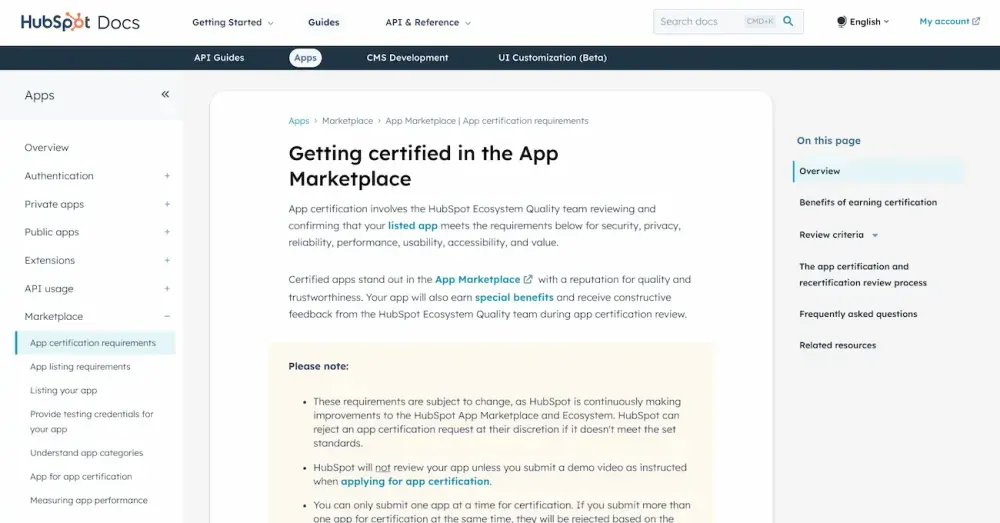
The HubSpot App Partner Program was now a partnership program with no set tiers, an approach not dissimilar to that of Shopify and Atlassian. They, too, had removed the idea of different tiers and a bespoke partnership agreement for every company. Instead, they set out to measure success like a typical "marketplace" oriented partner program.
In a tier-less, marketplace-oriented partnership program, partners are not pigeonholed into specific partner tiers based on arbitrary metrics. Instead, partners are empowered to choose their level of engagement and investment based on their business needs and goals. Their success is based on developing fantastic products and relationships.
"Certification" - for example - becomes a way to stand-out in the marketplace, but it's an opt-in benefit.
This "one tier" approach allows partners to focus on what truly matters - creating customer value and engagement - rather than trying to meet specific revenue targets or sales performance metrics.
It's a different type of partnership ecosystem - more like a marketplace economy - and each company has the freedom and access skills and services to build their business. Like any business in any economy, they also benefit from being able to walk away whenever they wish.
No more top tier partners
So that's how we ended up with a “no tier” HubSpot App Partner program.
We started with a focus on the customer, to create a diverse and innovative ecosystem to meet their increasingly diverse needs. We incorporated feedback from partners - present and future - to create an inclusive program which removed friction and distance (and partner tiers) between our customers and their solutions.
And we eliminated vanity metrics, focusing on innovation and product quality over all else.
It’s far from perfect - nothing ever is - but I’m immensely proud of the partnerships program we created. The HubSpot App Partner Program launched at INBOUND 2019, alongside the new HubSpot App Marketplace - the creation of which is a blog post for another day.
It wasn't a time consuming process - just 9 months from program inception to program launch.
Measure the success of a tier-less partner program
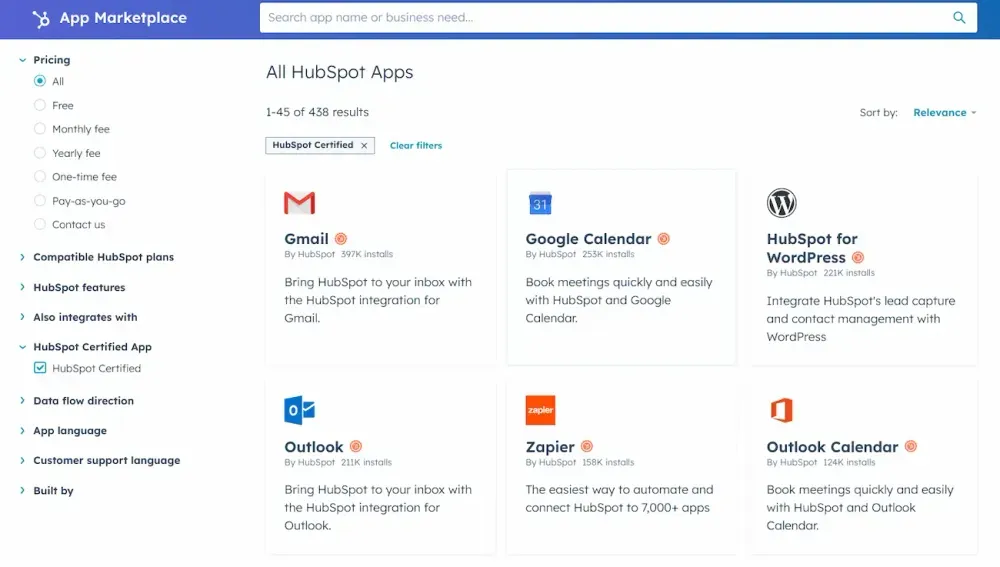
So, with all these changes, across a variety of different levels, how did we determine the benefit and impact of each partnership? The App Partner program does, after all, exist to create value for customers, partners - and "HubSpot" the company.
Instead of leads generated, revenue, or other typical partner program metrics of success, we focused primarily on customer satisfaction, solution adoption, and overall business impact. We looked at correlation (and causation) of revenue uplift and retention benefits linked to partnerships.
Our amazing partner managers played a crucial role here, using data and analytics to track partner performance and identifying areas for improvement. By providing targeted partner management, support and resources, our partner managers helped partners succeed and grow - without the need for dedicated partner tiers. The relationships they developed with partners were key to it all working well.
The new App Partner Program initiated a more holistic approach to measuring a partnership's success, one that valued quality and quantity. And that focused partners on creating utility value for customers, rather than being focused on what they might need to do to get to the "next tier."
Lessons Learned and Future Directions
I’ll share more on how we evolved our approach to partnership benefits in a future post. Benefits are often over-promoted to partners, and under utilized by them. It's often difficult to determine the real value of them for partners. So i'll dedicate a future post to this topic alone.
And I'll share more about our approach to replacing tier documentation by instead developing publicly available listing and certification requirements. Those resources deserve far more detail than could ever be included here. Most partner programs tend to under-invest in proactive communication - which usually includes documentation.
Hopefully this post is a solid starting point for Partnership Leaders thinking through how they can structure their own App Partner Programs - with or without partner tiers.





